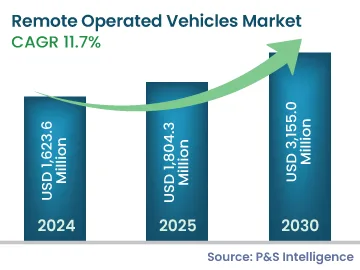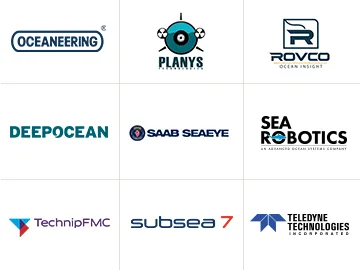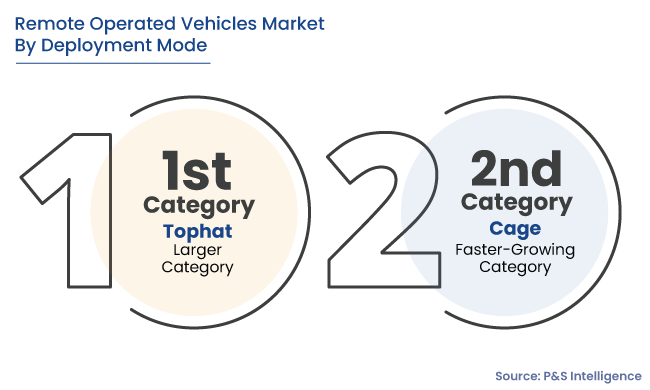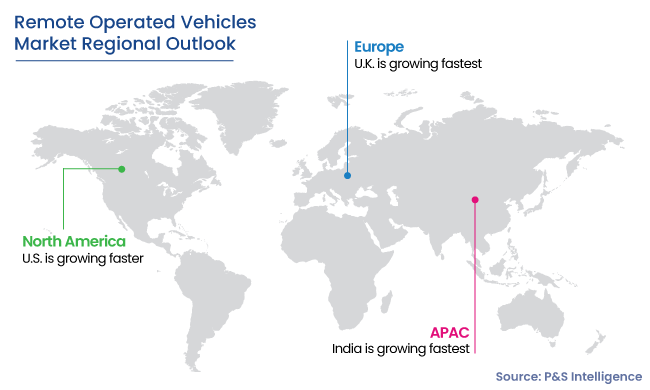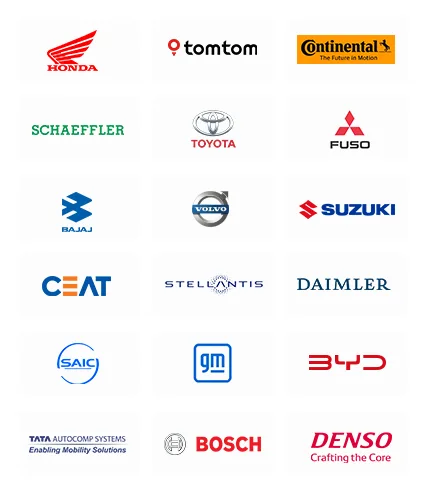Remote-Operated Vehicles Market Analysis
The size of the global remote-operated vehicles market will be around USD 1,623.6 million in 2024, and it is expected to reach USD 3,155.0 million by 2030, advancing at a CAGR of 11.7% over the forecast period (2024–2030). This can be ascribed to the increase in offshore oil and gas exploration & production, especially in deep waters, around the world.
ROVs have either hydraulic or electric thrusters for propulsion and control.
The UUV technology came into the picture since the interest in deep-sea exploration rose all over the world. ROVs have the capability to perform underwater operations, such as observation, inspection, and load delivery.
The tether management system allows them to be lowered into the water to a working depth. Then, ROVs are attached with cords for navigation and operated in the marine environment. They have a plenty of applications in scientific research, military operations, deep-sea exploration, ship wreckage collection, and the oil and gas industry.
They can perform underwater inspection, observation, and other operations where humans and conventional watercraft have limitations due to underwater conditions. Deep-sea divers have depth limitations since the human body cannot sustain the high underwater pressures and low oxygen levels for long. This is why ROVs are of much help in deep-sea exploration and maritime construction projects.
